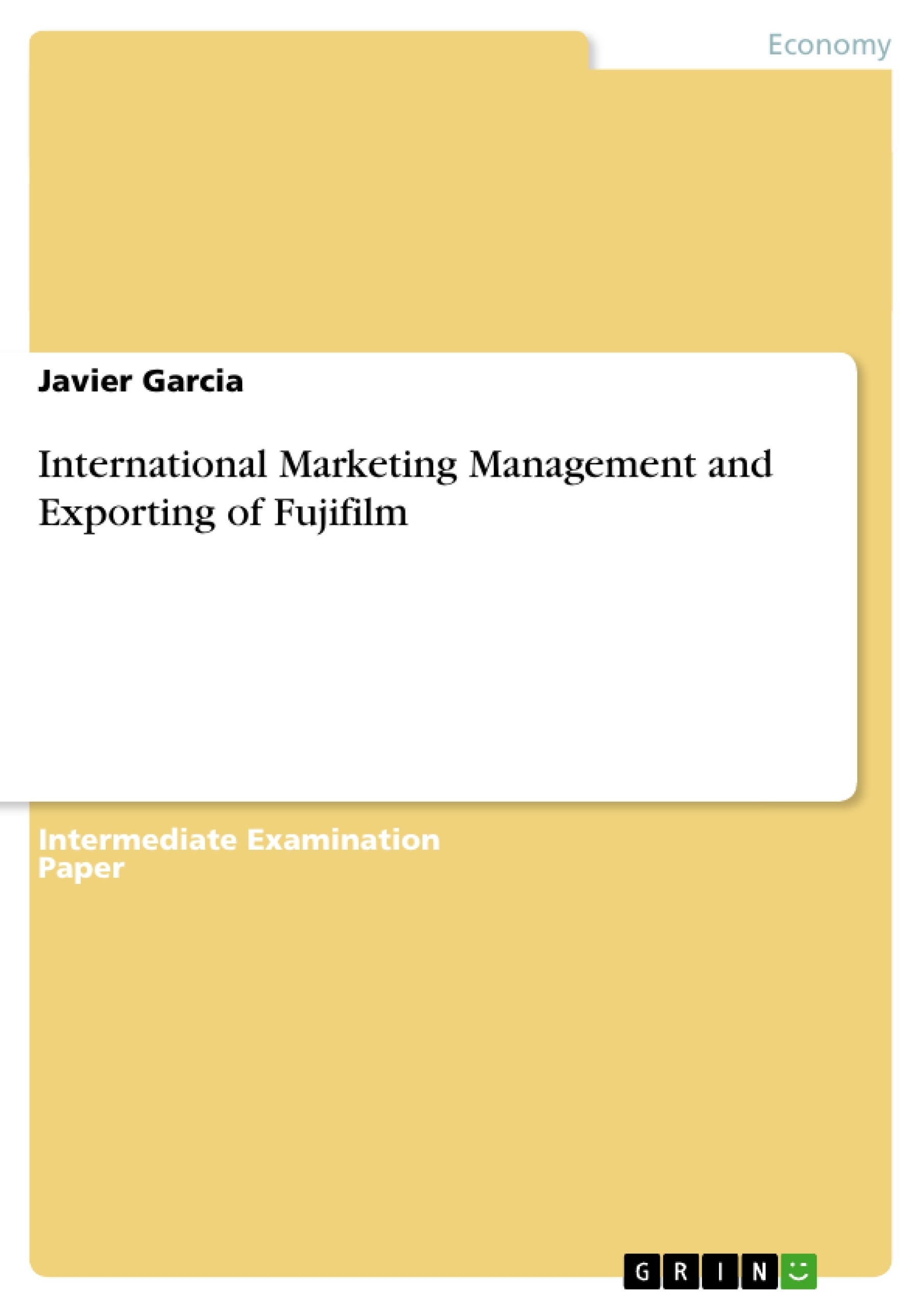In this assignment, the author would analyse the internationalisation of Fujifilm largely via local production. To do so, there would be considered three of the major internationalisation approaches, which have been considered as the most valuable for this case due to its practical appliance to the case study. The form of the analysis would be presented as following First of all, the main the theories’ basis would be introduced, immediately after the author would compare
the theory to the information given in the case study, where other theoretical information would be applied for after establish the validity of the theory to the case study. Once the three approaches have been established, the author would summarise the main point to end with a final conclusion.
Inhaltsverzeichnis (Table of Contents)
- Introduction
- International Trade Theories
- The Transaction Cost Approach (TCA)
- The Eclectic Framework (Dunning, 1998)
- Summarise of the Main Points
- Conclusion
Zielsetzung und Themenschwerpunkte (Objectives and Key Themes)
This assignment examines the internationalization strategy of Fujifilm, focusing on its decision to utilize local production as a primary mode of expansion. It analyzes this strategy through the lens of three key internationalization theories: International Trade Theories, the Transaction Cost Approach (TCA), and the Eclectic Framework (Dunning, 1998). The objective is to assess the validity of these theories in explaining Fujifilm's internationalization efforts, particularly in the US market.
- International Trade Theories
- The Transaction Cost Approach (TCA)
- The Eclectic Framework (Dunning, 1998)
- Competitive Advantages
- Market Imperfections
Zusammenfassung der Kapitel (Chapter Summaries)
Introduction
The assignment outlines its purpose of analyzing Fujifilm's internationalization through local production. It presents the three main theories that will be applied to the case study: International Trade Theories, the Transaction Cost Approach (TCA), and the Eclectic Framework (Dunning, 1998).
International Trade Theories
This section explores the classic trade theory, the Product Life Cycle theory, and the Market imperfection theory, examining their applicability to Fujifilm's decision to establish a manufacturing subsidiary in the US. It considers factors such as production costs, market size, and competitive dynamics.
The Transaction Cost Approach (TCA)
This chapter focuses on the Transaction Cost Approach (TCA), highlighting its effectiveness in explaining vertical integration decisions. The TCA analyzes Fujifilm's choice between establishing an owned manufacturing subsidiary and outsourcing production, considering transactional costs and control implications.
The Eclectic Framework (Dunning, 1998)
This section explores the Eclectic Framework, which examines three factors influencing overseas production decisions: ownership advantages, location advantages, and internationalization advantages. It analyzes Fujifilm's decision to establish a manufacturing plant in the US based on its ownership advantages, market attractiveness, and risks, and control considerations.
Schlüsselwörter (Keywords)
This assignment explores the internationalization strategy of Fujifilm, focusing on local production, international trade theories, the Transaction Cost Approach (TCA), the Eclectic Framework (Dunning, 1998), competitive advantages, market imperfections, ownership advantages, location advantages, and internationalization advantages.
- Quote paper
- Javier Garcia (Author), 2004, International Marketing Management and Exporting of Fujifilm, Munich, GRIN Verlag, https://www.grin.com/document/23127



